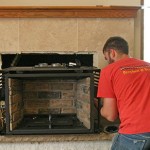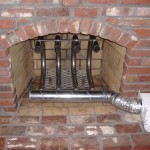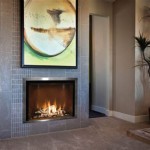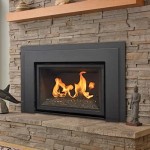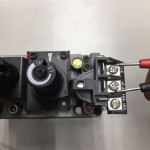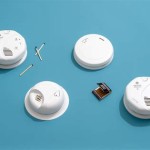```html
Replacement Parts for Gas Log Fireplaces
Gas log fireplaces offer the aesthetic appeal of a traditional wood-burning fireplace with the convenience and efficiency of gas. They are a popular choice for homeowners seeking supplemental heating and ambiance. However, like all mechanical systems, gas log fireplaces require regular maintenance and occasional repairs. Identifying and replacing worn or damaged parts is crucial for ensuring safe and efficient operation. This article provides a comprehensive overview of common replacement parts for gas log fireplaces, their function, and factors to consider when sourcing replacements.
Understanding the anatomy of a gas log fireplace is essential for identifying necessary replacement parts. A typical gas log fireplace system comprises several core components, including the gas valve, burner, pilot assembly, thermocouple or thermopile, oxygen depletion sensor (ODS), logs, and control system (manual valve or remote control). Each component plays a vital role in the safe and efficient operation of the fireplace.
Gas Valve Replacement
The gas valve is a critical safety component responsible for controlling the flow of gas to the burner. It regulates the gas pressure and initiates or terminates the gas supply based on user input and safety sensor feedback. Gas valves can fail due to wear and tear, corrosion, or electrical malfunctions. Common signs of gas valve failure include difficulty lighting the pilot light, a weak or fluctuating flame, and a gas smell even when the fireplace is not in use.
When replacing a gas valve, it is imperative to select a direct replacement model that is compatible with the existing fireplace system. The new valve must have the same gas type (natural gas or propane), BTU rating, and connection size as the original valve. Incorrect installation or an incompatible valve can lead to serious safety hazards, including gas leaks and explosions. Consulting a qualified gas appliance technician for gas valve replacement is strongly recommended.
Factors to consider when selecting a replacement gas valve include the manufacturer, model number, and gas type. It's also important to examine the control mechanism. Some gas valves are manually operated, while others are electronically controlled via a remote or wall switch. Ensuring that the replacement valve matches the existing control system is crucial for seamless operation. Furthermore, look for valves that are certified by recognized testing laboratories, such as UL or CSA, to ensure they meet safety standards.
Burner and Pilot Assembly Replacement
The burner is the component where gas mixes with air and ignites to produce the flames. The pilot assembly provides a small, continuous flame that ignites the main burner. Over time, burners can become clogged with debris, corroded, or damaged, resulting in uneven flame distribution or a complete failure to ignite. Pilot assemblies are also prone to clogging and malfunction, often requiring replacement due to a weak or nonexistent pilot light.
Replacing the burner typically involves removing the existing burner assembly and installing a direct replacement. It is crucial to ensure that the replacement burner is the correct size and configuration for the fireplace model. The burner should be properly aligned and secured to prevent gas leaks. When replacing a pilot assembly, pay close attention to the positioning of the pilot flame relative to the thermocouple or thermopile. The flame must adequately heat the sensor to maintain the gas supply to the burner.
Selecting a replacement burner often depends on the material and design. Burners can be made from various materials, including stainless steel, cast iron, and ceramic. Stainless steel burners are generally more durable and resistant to corrosion. The burner design can also affect the flame pattern and heat output. For pilot assemblies, ensure the replacement matches the gas type (natural gas or propane) and the specific requirements of the fireplace model. Cleaning the burner and pilot assembly periodically can prolong their lifespan and prevent performance issues. A soft brush and vacuum cleaner can be used to remove dust and debris.
Thermocouple and Thermopile Replacement
The thermocouple or thermopile is a safety device that senses the heat from the pilot light. If the pilot light goes out, the thermocouple/thermopile cools down and shuts off the gas supply to the burner, preventing a gas leak. These devices are essential for safety and are often the cause of gas fireplace malfunction when the pilot light will not stay lit. The thermocouple generates a small electrical current, while the thermopile generates a larger current, often used to power a millivolt valve system.
A faulty thermocouple or thermopile will prevent the main burner from igniting or cause it to shut off prematurely. Common signs of a failing thermocouple/thermopile include the pilot light going out shortly after being lit and requiring constant holding of the control knob to keep the pilot lit. Replacing a thermocouple or thermopile is relatively straightforward but requires careful attention to detail.
When selecting a replacement, it is crucial to choose a direct replacement model that matches the specifications of the original component. The length and type of connection must be compatible with the gas valve. The thermocouple/thermopile should be properly positioned in the pilot flame to ensure proper heating and electrical signal generation. A loose connection or improper positioning can prevent the device from functioning correctly. Before replacing the thermocouple or thermopile, inspect the wiring for any signs of damage or corrosion. Damaged wiring can also cause the thermocouple/thermopile to malfunction. Cleaning the pilot assembly and ensuring a strong, steady pilot flame can also extend the lifespan of the thermocouple/thermopile.
Oxygen Depletion Sensor (ODS) Replacement
The Oxygen Depletion Sensor (ODS), also known as a pilot safety system, is a crucial safety mechanism designed to shut off the gas supply if the oxygen level in the room drops to an unsafe level. This is particularly important in rooms with poor ventilation, where combustion can deplete oxygen and produce carbon monoxide. The ODS continuously monitors the oxygen level and shuts down the fireplace if the level falls below a predetermined threshold.
A malfunctioning ODS can cause the fireplace to shut off intermittently or prevent it from lighting at all. Signs of a failing ODS include the pilot light frequently going out, especially after the fireplace has been running for a while. In some cases, the ODS may trigger even when the oxygen level is adequate. Replacing the ODS is essential to ensure the safe operation of the fireplace and prevent carbon monoxide poisoning.
When selecting a replacement ODS, it is crucial to choose a direct replacement model that is compatible with the fireplace. The replacement ODS must be designed for the specific gas type (natural gas or propane) and have the correct sensor sensitivity. Ensure that the replacement ODS is properly installed and connected to the gas valve. The sensor tip should be positioned correctly in the pilot flame to accurately monitor the oxygen level. Regularly inspecting and cleaning the ODS can help prevent malfunctions and ensure its proper operation. Dust and debris can interfere with the sensor's ability to detect oxygen levels accurately.
Gas Logs Replacement
While not directly affecting the operation of the fireplace, the gas logs contribute significantly to the aesthetic appeal. Over time, gas logs can become cracked, chipped, or discolored due to exposure to heat and soot. Replacing the gas logs can restore the fireplace's appearance and enhance its ambiance.
When choosing replacement gas logs, consider the material, size, and arrangement. Gas logs are typically made from ceramic fiber or refractory cement. Ceramic fiber logs are lighter and more realistic in appearance, while refractory cement logs are more durable and retain heat better. The size and arrangement of the logs should complement the fireplace's dimensions and create a visually appealing flame pattern.
Selecting replacement gas logs involves considering the aesthetics and functionality. Ensure the logs are designed for use with the specific fireplace model and gas type. The logs should be arranged in a way that allows for proper airflow and flame distribution. Overcrowding the burner with logs can restrict airflow and reduce efficiency. Regularly cleaning the gas logs with a soft brush can help remove soot and maintain their appearance. Avoid using harsh chemicals or abrasive cleaners, which can damage the logs.
Sourcing replacement parts for gas log fireplaces requires careful consideration of compatibility, quality, and safety. Always consult the fireplace manufacturer's manual or a qualified gas appliance technician to identify the correct replacement parts. Purchase replacement parts from reputable suppliers who offer high-quality components and warranties. When installing replacement parts, follow the manufacturer's instructions carefully and ensure that all connections are properly tightened and leak-tested. Regular maintenance and prompt replacement of worn or damaged parts will ensure the safe and efficient operation of the gas log fireplace for years to come.
```
A Plus Inc Lennox Ebvst Replacement Parts And Accessories

What Are Common Gas Fireplace Service Parts Fireplaces Direct Learning Center

A Plus Inc Superior B500 Replacement Parts Accessories

Comfort Glow Vent Free Fireplace Brookhill Compact Fireplaces

Napoleon Gl30e Vented Gas Log Set 30 Inch

Fiberglow 18 Gas Log Set Natural Electronic Ignition

We Fix Gas Logs Houston Tx Lords Chimney

Pleasant Hearth Wildwood 24 In Vent Free Dual Fuel Gas Fireplace Logs Vfl2 Ww24dt The Home Depot

Gas Log Accessories Embers Pine Cones Safety Valves

Can A Wood Burning Fireplace Be Converted To Gas The Flame Company
Related Posts

